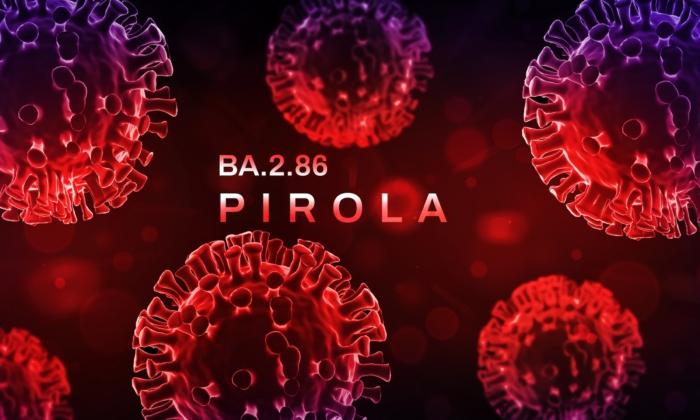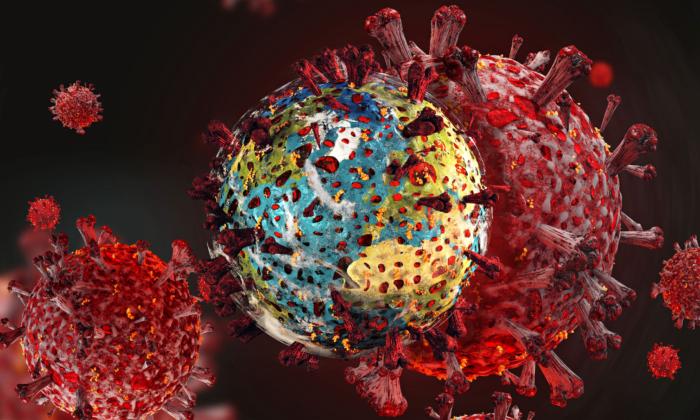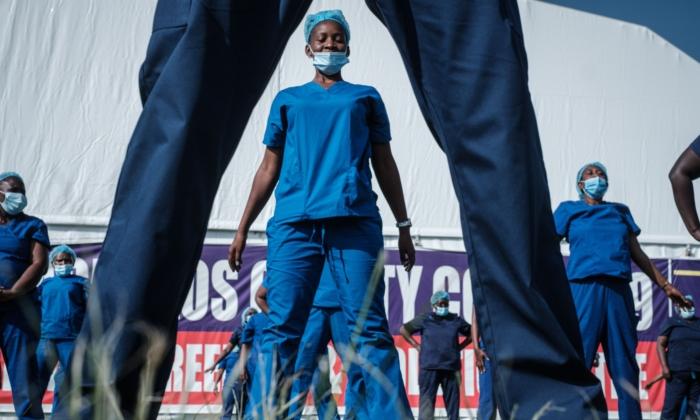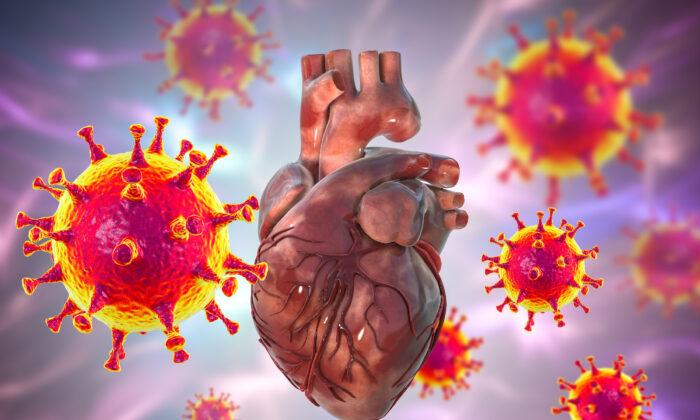This essay was written by a physician colleague of mine, whose opinion I value greatly. The research, views, and opinions are his own, not mine. I write this because he is covering a very sensitive topic. If one doesn’t tread very carefully, this is a topic that could put a scientist or a physician on a DHS terrorism watch list, or on the list of the president’s “dirty dozen.” Censoring people, and labeling scientists and physicians as terrorists because they have different scientific opinions than the official HHS public health/industrial complex opinion is now a “thing.”
For this reason, I have placed the above disclaimer on the following article.
What Happens to Vaccine Clinical Trial Participants?
By A Midwestern DoctorAlmost every abusive relationship follows a similar pattern: The abusive partner lures the abused party into the relationship with lavish promises, and then once they are ensnared, finds reasons to renege on those promises and justifications to be a little bit abusive. The abused party will try to resist this shift, but the abuser will find some way to overcome that resistance (e.g., they will gaslight the partner into believing the abuse isn’t even happening).
Normally, one of the following breaks this cycle:
- The abuse is so flagrant that outside parties get involved to try to stop it. For example, sometimes someone will show up at the emergency room (ER) with an injury resulting from domestic violence, and law enforcement may get involved, although this is by no means guaranteed (e.g., the ER may not be able to intervene in the cycle if the patient wishes to stay with the abuser), and sometimes a neighbor will overhear an incident and contact the police.
- The abuser decides they have no further use for the abused party and discards them.
- The abused individual walks away.
One of the things I’ve found quite frustrating about life is that many people I come across (including individuals I do not consider to be mean-spirited) will follow a similar pattern of gradually escalating the obligations and expectations they place on me, in tandem with increasing hostility toward any noncompliance I provide to their increasing demands. When I was younger, I would frequently find myself being pushed into abusive dynamics (a common scenario was my wanting to help someone who requested it), and then clashing with the party later when they began pushing those demands onto me, and I had to try and make them stop. As I’ve gotten older, I’ve accepted that this is just something people do, and the best way to navigate the issue is by always sidestepping expectations or obligations people attempt to place on you so the cycle can never start (which can sometimes be very challenging).
Another common abuser of society is the pharmaceutical industry. Nowadays, I am often asked how I was able to accurately predict the course of the pandemic, and my answer each time is: “All of this was just an escalation of what the industry had done previously.” As the years have gone by, the industry has become more and more brazen in pushing unsafe and ineffective medications onto the market and paying off the government to gaslight the injured parties, rather than fulfilling its obligation to investigate and pull the harmful medications.
Similarly, there were major concerns with safety, efficacy, and research fraud, which should have never allowed the first selective serotonin reuptake inhibitor (SSRI) antidepressant Prozac to enter the market. Bush senior (who had previously served on the board of Prozac’s manufacturer) played a key role in forcing it through the approval process (the FDA did not want to approve it).
Once it was approved (many other competitors quickly jumped into the market with equally dubious clinical trial data), the FDA received a deluge of reports of severe side effects from SSRI users, including violent acts of suicide or homicide. The FDA then did everything it could to bury this information (e.g., forbidding their own reviewer to release a report that was critical of giving SSRIs to children, and authoring its own inaccurate meta-analysis which erroneously argued that there were no safety concerns with the SSRIs).
Similarly, in 2009, in response to widespread publicity detailing serious adverse events attributed to the human papillomavirus (HPV) vaccine, the FDA and CDC initiated a study to examine Gardasil’s safety profile based on VAERS case reports. It analyzed all VAERS reports filed since Gardasil’s mid-2006 approval through the end of 2008, a period of two and a half years.
The key finding of the study was that “the VAERS reporting rate for [Gardasil] is triple the rate for all other vaccines combined.” Additionally, the study found that 68 percent of the reports were submitted by representatives of Merck, Gardasil’s manufacturer, most of which were largely incomplete or inaccurate, and 90 percent of which lacked information essential for conducting medical assessments. Finally, the authors also noted that VAERS suffered from underreporting.
Given how poorly the HPV vaccine was handled, I was dubious that the CDC or FDA could be relied upon to recognize red alerts within VAERS for a highly dangerous vaccine entering the market. However, VAERS providing red alerts (which were ignored) also demonstrates that VAERS is serving its intended function, because its creation was the result of activists (e.g., parents of vaccine-injured children) demanding a way for the public to be able to directly report vaccine injuries and be able to access this citizen data.
The Clinical Trial Experience
I recognize that bringing up the subject of domestic abuse can be a very unpleasant subject to touch upon, and for that reason, I went back and forth on it. However, I felt it so perfectly matches what I’ve seen happen to clinical trial participants, it had to be covered.In numerous clinical trials I’ve looked at, the same pattern is followed:
- The pharmaceutical company does everything it can to entice the trial participant into participating, including emphasizing how special they are for doing it, and promising that nothing bad will happen, but if it does, the company will do everything possible to take care of them (doctors are also often paid for each participant they enroll, and aid this process).
- Once the participant experiences negative effects from the trial drug, the trial coordinators will do everything they can to gaslight the participant into either believing the adverse event did not happen, or that it was not related to the drug. This is often easy to accomplish because the abused trial participant does not want to believe it could have happened (e.g., because they trusted in the researcher’s promises that led to their enrollment).
- If the participant overcomes the gaslighting, and attempts to have their experience documented, their adverse event will still not make it into the final clinical trial report (it will either not be reported at all, or reclassified as something relatively minor).
- Most importantly, regardless of any previous promises, the pharmaceutical company will not offer any support to those who are harmed by the pharmaceutical. Instead, they are kicked to the curb and discarded once they no longer have anything to offer the pharmaceutical company.
In 2020, I found a way to join an online group for participants in the COVID-19 vaccine trials and read a variety of fairly concerning side effects by the participants. Later when the trial reports were published, I could not see many of the concerning symptoms they described anywhere in either Pfizer’s or Moderna’s clinical trial reports. Since that time, I have seen a gradual trickle of people coming forward from the clinical trials telling me that exactly what I had seen happen previously in the HPV trials had happened to them.
The HPV Trials
This section contains direct quotations from this excellent book at the permission of its author. It was written in 2018 and sadly predicted much of what was to follow less than three years later. The most important thing to understand about the HPV vaccine was that it was designed to be a cash cow to “prevent cervical cancer,” and made Merck a lot of money.
“When she was 18 and still in high school, Kesia received a brochure in the mail about an exciting clinical trial for a vaccine that would prevent cervical cancer. She didn’t know it was possible to vaccinate against cancer. She had heard that getting regular Pap tests was the best way to prevent cancer because most problems could be caught early and treated. The brochure said that the vaccine had no side effects, as it had already been thoroughly tested. It read, “FUTURE 2 er IKKE et bivirkningsstudie,” which translates to “the FUTURE 2 study is NOT a side effect study” (original emphasis on “NOT”). This piqued her interest, particularly because the vaccine had already been proven safe.
“… At her [third vaccination] appointment, she told the clinician she wasn’t feeling well and was frequently tired and in pain. She asked if she should perhaps delay the shot. The nurse reassured her that what she was feeling had nothing to do with the vaccine and that she could get the third dose without problem. The nurse asked if Kesia had had any reactions after her second dose. Outside of the headaches, the fatigue, and muscle aches from her ongoing illness, Kesia couldn’t remember the exact details from the last six months. She told the nurse about the headaches, which she got four or five times a week, lasting all day. The nurse told her not to worry and that some headaches were normal.
“She completed the paperwork and gave Kesia her third and final injection … After this appointment, Kesia felt dizzy for the first time. She felt nauseated, and her arm hurt more than ever. During the following weeks, however, her health took a sharp turn for the worse.
“She went to her doctor, and when she told him she had participated in a clinical trial for a new vaccine, he was worried. He made a note in her file, and Kesia saw him put two exclamation points next to it. He asked her to talk to the trial staff again about her symptoms because all her blood tests were fine [common blood tests typically cannot detect signs of vaccine injuries, which leads to the patients being told nothing is wrong and it is all in their head].
“Kesia returned to the hospital for a follow-up visit a month after her final shot. She tried to talk to the trial staff again about her symptoms based on her doctor’s concerns [sadly, this is often the only way to get people to listen], and they listened more intently this time. She told them that she was struggling to keep a normal, everyday life and that this was not something she had ever experienced before. But they told her once again that her symptoms were not the kind they would expect to see with the vaccine, and she should continue to see her regular doctor.
“Kesia accepted this explanation; after all, they were the experts, and she knew the vaccine had already been tested for safety. She tried to put it out of her mind (‘I DIDN’T WANT IT TO BE THE VACCINE’), as she had a 50 percent chance she’d received the saline placebo and not the vaccine at all.
“As [the] months passed, Kesia became so ill that all she could think about was her next doctor’s appointment. She missed so many exams in her last year of high school that she couldn’t graduate alongside her classmates. She had to put her dreams and plans on hold until she could feel well enough to get through the day without a headache or pain in her joints and muscles. It was a daily struggle to get out of bed, let alone to attend school or university … She never thought months would turn into years, and years would turn into more than a decade [I also know people who have experienced things like this].
“When the trial investigators unblinded the trial in 2007, a year after the FDA approved Gardasil, Kesia learned that she had received the vaccine after all. She was relieved that the trial was over. If she had had the saline injection, she would have been strongly urged to go back to the hospital for the three vaccines, which would have been tough now that she was so ill [this an excellent illustration of the cult-like mentality around vaccines, which only see their benefits but not their harms]. She heard no more from the clinical trial staff, although she agreed to be part of follow-up studies.
“More than a year later, when she was sitting with her husband, watching an online news channel, things clicked. She heard a woman talk about getting the vaccine shortly after it was approved. As the woman described her reaction to each shot, Kesia’s heart stopped. It was like listening to her own story—the same timeline, the same symptoms. At that moment, Kesia felt like the rug had been pulled out from under her. After all these years of wondering why she was so sick, here was another woman telling the exact same story.
“She couldn’t believe it. How could this happen if the vaccine had been ‘proven’ safe? Every time she told the trial nurse about her symptoms, the nurse assured her that they weren’t related … She barely slept that night.
“The next day, she went online to start looking for answers [although Facebook aggressively censors pharmaceutical injury support groups, they are much more common now than they were in the past and I’ve learned a great deal from them]. She contacted Denmark’s vaccine victim support group and spoke with Sara, who eventually became her dear friend. They talked for a long time, and Sara understood. She had heard it before. For Kesia, though, it was the first time she didn’t feel crazy. It had been 13 years of living with pain and hearing doctors deny that her condition was real [this is what you hear over and over again in those previously mentioned support groups].
Here is the next ’real life' example from the book:
“Only a few miles away in Copenhagen, another young woman was going through a similar awakening. Sesilje had also been in the FUTURE 2 study, and like Kesia, her health too has suffered ever since. The two young women met through the victim support group in July 2016. Sesilje’s story is remarkably similar to Kesia’s, with one significant difference: Sesilje received the placebo …
“… Sesilje didn’t notice any strong reactions after the first shot, although it was quite painful. She had an unusual menstrual period the month following the vaccine but did not think it was related. The clinicians did not give her any booklet or form for recording symptoms. They did mention that she would feel injection site reactions and maybe a headache. The bleeding was just a coincidence, she thought.
“A month later, Sesilje went back to the hospital for her second shot … [The clinicians] told her that she should see her personal doctor about the menstrual period, as it was unrelated. It was after this shot that she noticed unusual symptoms, not just the heavy menstrual period. Her skin hurt, she had headaches, and she felt as if she had the flu. Her stomach really hurt, and she lost 12 pounds in a matter of weeks. She went to her doctor, but he could not figure out her symptoms. Sesilje couldn’t understand; she had always been healthy [this is also a very common story].
“When Sesilje returned for her third shot, the trial staff told her again that her recent health issues were unrelated. She should continue to see her own doctors and follow their advice. They assured her it was safe to proceed.
“[After] finishing the series in 2003, Sesilje was told she had to wait until 2007 to find out if she had received the saline placebo or the vaccine. Her symptoms persisted, but no doctor could figure out why. She developed an allergy to her deodorant and various skin creams. She went to a dermatologist, who told her to switch brands, which didn’t help. As part of her studies in medical research, Sesilje was around health care professionals, but no one could explain why she was so ill. Like Kesia, she learned to cope [and suffered significant symptoms in the years that followed, especially after being pressured to and receiving the actual vaccine] …
“… In 2015, everything changed. She read online that the Gardasil clinical trials had used an aluminum solution as the control, not saline, as she had been told. Sesilje worked in clinical research, so she knew that this should not have been permissible. She was certain that she had been told that the control was saline—it was even printed in the brochure she received years ago.
“The protocol said that safety testing was the clinical trial’s No. 1 objective. Yet Merck had assured potential trial volunteers in the brochure they’d received that the control was saline and that FUTURE 2 was not a ’side effect trial,' because the vaccine had already been proven safe [as all vaccines are “safe”]. Was this why their side effects were not taken seriously, because even the trial administrators didn’t know exactly what they were injecting into participants? The clinicians did not collect any medical records from Kesia’s or Sesilje’s doctors and didn’t record any details to explain why they thought the symptoms were unrelated. The reason Kesia and Sesilje felt safe enlisting in the trial was that [they were told] Gardasil had been proven safe.
“The protocol states that 10 percent of participants received a ‘vaccination report card’ to record adverse effects in the first 15 days after each vaccination [which is too small of a window to catch most reactions], but only in the U.S. Why did Danish girls not receive a report card? They had many more questions.
“Merck vaguely defined ’safety‘ as three doses of Gardasil being ’generally well tolerated.‘ We are unable to know how Merck assessed whether Gardasil was ’generally well tolerated' in analyzing the data [this illustrates why it is so important to pay attention to the exact wording that pharmaceutical companies use; here they implied something without actually committing to the implied position].
“Within the trial guidelines, investigators seemed to have [had] broad discretion to determine what constituted a reportable adverse event, and Merck was under no obligation to review a participant’s medical records, even if a participant developed a ’serious medical condition that meets the criteria for serious adverse experiences’ as defined in Protocol 3.
“The Gardasil clinical trials used a new metric, ‘New Medical Conditions,’ as a way to claim that serious health problems after vaccination were unrelated to the vaccine or aluminum-containing fauxcebo [fake placebo]. More than 50 percent of all clinical trial participants reported ‘new medical conditions,’ including infections, reproductive disorders, neurological syndromes, and autoimmune conditions. The FDA did not question this novel metric or whether the vaccine itself might be contributing to these conditions.
“Likewise, a 2006 European Medicines Agency (EMA) pre-licensure scientific discussion made no reference to the term. The first place we find reported data is in the FDA’s 2006 Clinical Review, immediately before it approved the vaccine. The document does not define this category, and lists it as ‘new medical history’ in the table of contents. It uses the terms ‘new medical history’ and ‘new medical condition’ interchangeably.
“Buried near the end of the FDA review document, tables 302 and 303 [which can be viewed within ”The HPV Vaccine on Trial"] reveal that almost half of all trial participants, regardless of whether they received the vaccine or a fauxcebo, reported ‘new medical conditions.’
“Why did Merck single out only 2.3 percent of the ‘new medical condition’ data, particularly when 49 percent of participants reported other new conditions indicating all kinds of serious illnesses, including blood, lymphatic, cardiac, gastrointestinal, immune, musculoskeletal (arthritis), reproductive, neurological, and psychological ones, and even conditions requiring surgery, such as appendectomies? Even with the autoimmune subset data disclosed on the insert, Merck could justify them by noting that the Gardasil and control groups had virtually the same results. Merck and the FDA apparently interpreted these similar data as support for safety rather than as signals for alarm.
“Despite the high overall rate of new conditions reported, Merck only disclosed a small subset of these data on the package insert. On Table 9 [also show within ”The HPV Vaccine on Trial"], Merck disclosed that 2.3 percent of participants in both groups reported ‘new medical conditions potentially indicative of a systemic autoimmune disorder,’ although it did not define the term.
“Merck’s November 2014 response [to the EMA questioning their reporting] explained away rare conditions occurring in less than 1 percent of participants as having no real pattern, and thus as unrelated.
“Merck offered the explanation that there was a similar number of subjects with illnesses in the Gardasil 9 and Gardasil control groups. But they considered all of these conditions unrelated to the vaccine.
“Before it approved Gardasil 9, the EMA also asked Merck in 2014 for more data on acute leukemia cases. The December 2017 Slate article provided links to these documents. Of the five cases Merck reported, four were in the Gardasil group, including three in Colombia, and one in the Gardasil control group. Merck disputed that the cases were cause for concern because the time to disease onset was prolonged (482 to 1,285 days) in all cases but one, when a trial subject received a diagnosis within a month after the third dose.
“The EMA expressed concern and commented that the number of cases in the trials was greater than what they would expect in the general population at this age, although ages were redacted in the report (see above table). It asked Merck to take a closer look at each case to see if there was a connection to the vaccine. The EMA asked Merck to provide an analysis of ‘expected’ versus ‘observed’ numbers of leukemia cases in subjects under 20 years old. We do not know Merck’s response, but since the EMA approved the vaccine shortly thereafter, we infer that the EMA was content with Merck’s response.
“When the FDA approved Gardasil in 2006, Merck reported 10 deaths in the vaccine group and seven in the AAHS group, out of 21,458 participants [which equated to 8.5 per 10,000 and 7.2 per 10,000] … Based on data from the CDC from 2002, the average death rate in girls and young women in the general population was 4.37 per 10,000.
“Protocol 019 [for a later vaccine] had seven deaths in the Gardasil group and one in the AAHS group. The Gardasil group’s rate of death was over four times that of previous studies in younger girls … Again, the FDA was satisfied that there was no signal in these data and that none of the reported deaths were associated with the vaccine. The FDA, however, did not approve the vaccine for older women following this study, allegedly because of poor efficacy.
“Protocol 020, an all-male trial of 16-to-26-year-olds, had 13 deaths out of 4,065 study participants. Uniquely in this trial, there were three deaths in the Gardasil group and 10 in the fauxcebo group. The rate of death was seven times higher than in the other fauxcebo groups. In all other trials, the fauxcebo group deaths never exceeded those in the vaccine group … Once again, the FDA did not note any unusual remarks in their review of the data and accepted Merck’s assertions that no deaths were due to the vaccine. The FDA approved the vaccine for boys and men based on these data.
“Once Merck added in these belated clinical trial death results from Protocol 019 and 020 to the original 2006 data set, the death rate jumped significantly to 13.3 per 10,000 (21 deaths out of 15,706) in the Gardasil groups and 14.5 per 10,000 (19 deaths out of 13,617) in the AAHS [“placebo”] group … The FDA did not note any of these rates as unusual.
Hopefully, my familiarity with these events and the complete failure of the federal government to address any of them should help to explain why I was somewhat skeptical that the COVID-19 clinical trials would be conducted with integrity or that their widely heralded trial reports published in a premier academic journal could be taken at face value.
Lastly, I will note that if abuse is not addressed, it typically worsens with time. For this reason, my expectation going into the COVID-19 vaccines was that what we would see would be even worse than what had happened with Gardasil (e.g., I believe it is fair to say multiple generations have been betrayed this time around), even though Merck was not the one to conduct those trials (as they lost the race to make a COVID-19 vaccine).
I hope that this article has given you some context for why it is so important to speak out against these injustices (because otherwise, it won’t be long before they happen to you) and how something like this can happen:
In the second part of this series, we will look at how each of the issues described here happened with the COVID-19 vaccines, and in my opinion, were even more horrendous.





